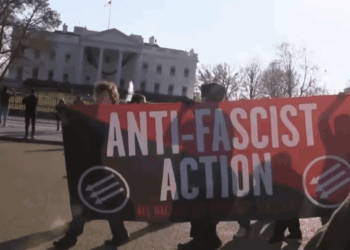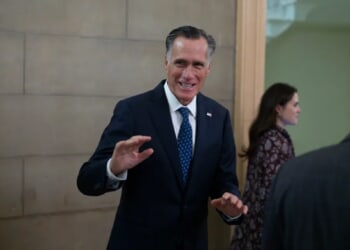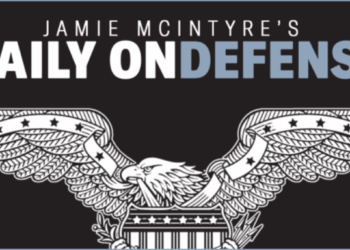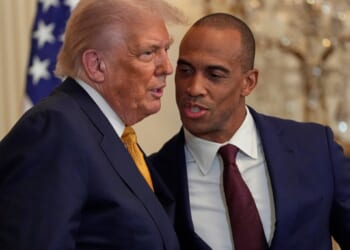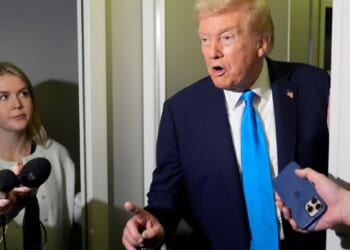
Order Michael Finch’s new book, A Time to Stand: HERE. Prof. Jason Hill calls it “an aesthetic and political tour de force.”
Sign up to attend Michael’s talk in Los Angeles on Thursday, November 20: HERE.
*
November 4, 1979. The day the Islamic Republic of Iran made its grand entrance onto the world stage, it stormed the U.S. Embassy in Tehran and took 52 Americans hostage for 444 days.
It was the beginning of modern Islamic terrorism on an international scale. But more than that, it was the beginning of our surrender.
Because what should have been the day the West drew a line became the day we gave a terror state its first reward: attention, negotiation, and ultimately, power.
And we never stopped.
The Day It Began: November 4, 1979
It started like a student protest. But this wasn’t some campus sit-in.
These “students” were handpicked militants, members of the Islamic Student Association, and directly aligned with Ayatollah Khomeini’s new theocratic regime. On November 4, 1979, they stormed the U.S. Embassy in Tehran, seized it in broad daylight, and took 66 Americans hostage.
Their demand? That the United States return King Reza Pahlavi to Iran so that the new Islamic regime could execute him.
Khomeini wanted a public spectacle, the symbolic slaughter of the man who had westernized Iran and defied clerical control. The Ayatollah framed it as divine retribution; the world watched as revolutionary mobs screamed for royal blood.
52 of them remained in captivity for 444 days.
14 were either released or escaped, primarily women, African-American staff, or diplomats believed to have “lesser” value to the regime. They were released in staged batches, mainly within the first few weeks, as part of Iran’s psychological warfare and PR strategy.
The Ayatollah had only taken full control of Iran earlier that year. The new regime was unstable, radical, and still consolidating power.
The embassy seizure changed everything.
It gave Khomeini an external enemy. It united the fractured revolution. It made America the devil and made him the supreme savior.
And it worked. Globally, images of blindfolded Americans flooded the media. Protestors in Iran chanted “Death to America” while burning our flag. At home, Americans were humiliated, and our government froze.
President Jimmy Carter publicly condemned the embassy attack, but behind the scenes, he negotiated. For over a year, his administration sent intermediaries, floated prisoner swaps, and even attempted a covert rescue mission (Operation Eagle Claw) that ended in total failure. Eight U.S. servicemen died in the desert without firing a shot.
But the worst part came later.
To finally secure the hostages’ release, Carter agreed to unfreeze nearly $12 billion in Iranian gold and bank assets, most of it held since the fall of the Shah. Even though the money had legally belonged to the previous government, Carter handed it over to the very regime that had taken Americans hostage.
“At stake were the lives of 52 precious human beings who had been imprisoned in Iran for 444 days and almost 12 billion dollars of Iranian assets.”
— President Jimmy Carter
On January 20, 1981, at 6:35 a.m., Deputy Secretary of State Warren Christopher confirmed the deal:
“All escrows were signed at 6:18. The Bank of England has certified that they hold $7.977 billion, the correct amount.”
The hostages were released just minutes after Ronald Reagan was sworn in.
But the deal? That was Carter’s. Reagan got the headlines. The Islamic Republic got the cash. And terror got its first real payday.
The West’s First Mistake: Rewarding the Revolution
Reagan took office. The hostages were released the same day, and Reagan, Mr. known for his hardline stance, wasn’t immune to appeasement.
In the mid-1980s, the Iran-Contra affair revealed that the Reagan administration had been secretly selling arms to Iran. Yes, the very same regime that took our embassy. The logic? Use the profits to fund anti-Communist rebels in Nicaragua (the Contras).
But the price was high.
We sent more than 1,500 missiles and military hardware to Iran. In return? They were supposed to help free a few hostages held by Hezbollah in Lebanon. Spoiler: they didn’t. They used the weapons to build their military. And to expand terror.
The key players?
- Lt. Col. Oliver North – The central figure who ran the operation out of the National Security Council
- Admiral John Poindexter – National Security Advisor who authorized it
- CIA Director William Casey – Oversaw the covert arms transfers
- Robert McFarlane – Reagan’s former National Security Advisor, who helped initiate the deal
They didn’t just break the law. They gave missiles to mullahs.
Congress was never consulted. The American public never consented.
George H.W. Bush: Silence and Soft Gloves
When Reagan’s vice president took over in 1989, he had every opportunity to change course. Instead, President George H.W. Bush doubled down on diplomacy.
Even after Iran orchestrated terror attacks on U.S. Marines in Lebanon, assassinations in Europe, and threats against American Jews, Bush refused to name the regime for what it was: an enemy.
In 1991, he sent a letter to Iranian President Rafsanjani, hoping to normalize relations. Iran rejected it. But the signal was clear: The U.S. still wanted the friendship of its own kidnapper.
Clinton: Flirting With the Mullahs
President Bill Clinton entered office in 1993 during a wave of so-called Iranian “moderates.”
He fell for it.
The regime had swapped turbans for suits. Western media promoted figures like Mohammad Khatami as progressive reformers. Clinton responded by easing restrictions on travel and trade.
In 1999, he even publicly apologized for past U.S. actions in Iran, blaming the CIA-backed coup in 1953 for Iran’s “mistrust.”
While Clinton smiled, Iran sharpened its knife.
Bush 43: 9/11 and the Enemy We Never Touched
Then came 9/11.
The planes hit. America bled. And the Bush administration launched the War on Terror.
Afghanistan. Iraq. Pakistan.
But not Iran.
Despite overwhelming evidence that Iran:
- Provided a safe harbor to Al-Qaeda members
- Facilitated the escape of bin Laden’s son
- Helped plan routes through Iran for hijackers
- Trained Hezbollah cells that later attacked U.S. soldiers in Iraq
George W. Bush never ordered a strike. Never sanctioned the IRGC like it deserved. Never held Iran accountable for its central role in modern jihad.
Instead, he called them part of the “Axis of Evil” and then did nothing.
We bombed Iraq. We bribed Pakistan. We let Iran build an empire.
While Democrats played nice and Republicans played dumb, the Islamic Republic expanded. It built proxy armies. Bought influence. Opened cultural centers and embedded mosques and seminaries across Europe and the Americas.
From hostage-takers to policy makers. From embassies to global militias.
The regime had grown, and the West had helped.
Obama’s Legacy: Cash and Capitulation
By 2015, Iran was bleeding from sanctions. Oil exports were collapsing. Inflation was near triple digits. Protests were simmering. The regime was desperate.
And then Barack Obama handed them a lifeline.
The Joint Comprehensive Plan of Action (JCPOA), marketed as a “nuclear peace deal,” didn’t stop Iran’s bomb program. It funded it.
In exchange for vague promises of “limited enrichment,” Obama lifted key U.S. and international sanctions, reopened Iran’s access to global banking systems, and unlocked up to $150 billion in frozen foreign assets of Iran’s oil revenue, investments, and overseas reserves, mainly in China, India, Japan, South Korea, and the EU, as punishment for its nuclear violations, terrorism funding, and human rights abuses.
Once the deal was signed, those countries were legally free to release Iran’s accounts.
Billions flowed back into Tehran, ready for the IRGC, Hezbollah, Hamas, and drone factories.
But that wasn’t the biggest scandal. The real betrayal came in the form of cash.
In January 2016, just as five American hostages were being released (four in the formal swap plus one separate release):
Jason Rezaian – Washington Post Tehran bureau chief, held since July 2014 on espionage charges.
Amir Hekmati – U.S. Marine veteran, arrested in 2011 while visiting his grandmother, falsely accused of spying.
Saeed Abedini – Iranian-American Christian pastor, jailed in 2012 for organizing underground house churches.
Nosratollah Khosravi-Roodsari – Arrested under unknown charges; details of his imprisonment remain limited.
Matthew Trevithick – American student and researcher, detained for four months without formal charges; released separately the same day.
The Obama administration secretly flew $400 million in cash to Tehran. More flights followed. The total payout reached $1.7 billion, all delivered in foreign currency on unmarked jets.
The White House claimed this was “settling an old debt,” money paid by the Shah of Iran in the 1970s for U.S. military equipment that was never delivered after the revolution.
But here’s the truth they didn’t tell you:
That debt had already been addressed by Jimmy Carter in 1981.
So by 2016, there was nothing left to settle.
And even if you believed the payment was justified, the delivery method exposed the truth:
Pallets of euros, Swiss francs, and other currencies, flown into Tehran under the cover of darkness, timed to the exact release of American hostages.
Obama stood at the podium and said:
“We do not pay ransom.”
Even worse, Obama’s team signed secret side agreements through the International Atomic Energy Agency (IAEA) that allowed Iran to inspect its own facilities, an absurd privilege no other nuclear power enjoys.
He also lifted travel bans on key IRGC and Hezbollah officials, unfroze bank access for sanctioned entities, and later released Iranian operatives who were serving U.S. prison sentences for smuggling weapons technology.
The administration called it “confidence building.” Tehran called it a victory.
And the world watched the most powerful nation on earth kneel to a regime that still called it the Great Satan.
Trump’s Mixed Legacy And Dangerous Turn
To his credit, President Trump (first term) did what others wouldn’t: he scrapped the nuclear deal and ordered the strike that killed Qassem Soleimani, the regime’s top terror general. For once, Iran feared consequences.
But now?
Let’s be honest: Trump’s second-term foreign policy hasn’t been about strength; it’s been about saving the Islamic Republic.
- While Israel was preparing a targeted strike against Ali Khamenei, Trump reportedly intervened, pressured Israel to stand down, and then bragged about it on Truth Social, claiming he had “saved Khamenei’s life.”
- In reality, he saved the life of the Supreme Leader of the most dangerous terror regime on Earth, the very man behind Hamas, Hezbollah, and the slaughter of Iranian protesters.
And it didn’t stop there.
- When Iran’s regime was on the verge of collapse, during the 12-day war, Trump helped push a ceasefire, not to protect American interests, but to let the Islamic Republic catch its breath.
Behind the scenes?
- Trump hasn’t walked away from the indirect negotiations Biden began.
- His team is still chasing a new deal.
- He has not reimposed a single sanction that Biden lifted.
- And he’s done nothing to punish Iran for funding the October 7 massacre, for butchering Mahsa Amini, or for arming every proxy that threatens Israel and the U.S.
Peace through strength” doesn’t mean bailing out your enemy when they’re about to collapse.
From Hostages to Hegemon
Iran no longer hides behind proxies. It owns them.
- Hamas? Bought and paid for.
- Hezbollah? Operates openly out of Lebanon.
- The Houthis? Armed with Iranian missiles.
- Iraq’s militias? Part of the government.
- The Taliban? Now partners in oil and border control.
Iran doesn’t just survive sanctions, it thrives. With help from:
- Russia (weapons deals)
- China (oil and currency laundering)
- The UN (human rights hypocrisy)
- And yes, even the U.S., under both parties.
Their regime is stronger than ever. Their reach extends from Caracas to Kuala Lumpur. They crush dissent. Hang gays. Execute Christians. Train children in martyrdom.
And yet, no boots on their neck. Just deals, cash, and diplomacy.
In 1979, they were a regime of black flags and AK-47s.
In 2025, they are a global empire of terror with nukes in reach and superpower friends in their corner.
How?
Because we kept rewarding them.
- When they took hostages, we negotiated.
- When they chanted death, we sent cash.
- When they built bombs, we offered deals.
- When they killed Americans, we called it “complex.”
And now, we’re negotiating again. Still afraid to act. Still chasing a peace that doesn’t exist.
We didn’t just let Iran grow. We helped it.
It’s time to face the truth:
Forty-six years later, the hostage-takers run the region and we’re still negotiating. We cannot fix the Middle East until we stop feeding its monster.



